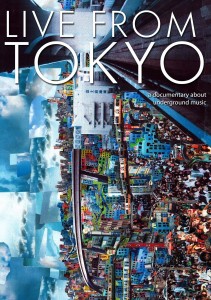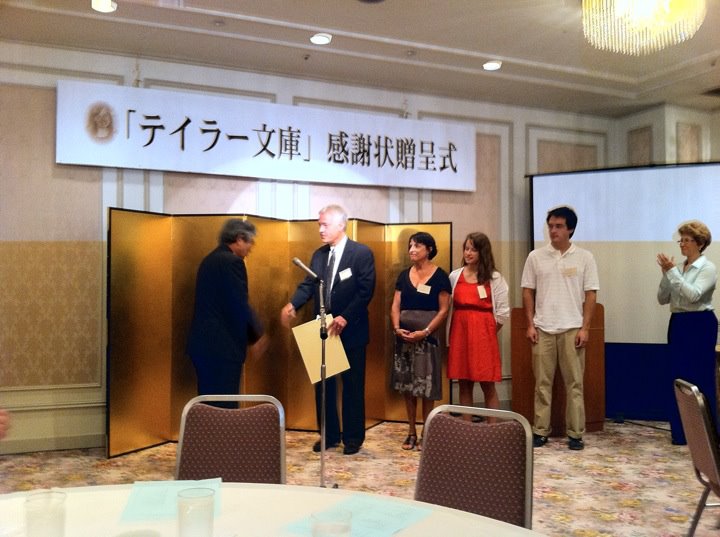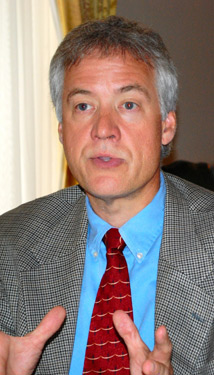Embassy of Japan in the UK (September 2011)
Embassy of Japan in the UK Webmagazine round-up via Dipika Soni (Ishikawa-ken, 2003-06). Dipika has recently moved back to London as is currently looking for new work opportunities related to Japan, translation, or other fields.
——————————————————————————————————————————–

Featured Article:
Japanese FA receive trophy at Wembley to mark 90th year
Other articles this month:
Japan Matsuri 2011
A taste of Japan in Colchester
“Approaches to facilitating effective global participation in action on climate change” A lecture by Professor Hironori Hamanaka
Films at the Embassy of Japan: Children on the Island
“KANPA+i London!” Ikebana, Sake & Food Charity Event
Beyond Words Beyond Borders: Messages to Tohoku
Akari Lantern Project – lantern carriers wanted!
UK-Japan Young Scientist Workshop in Cambridge
Tanabata Festival lifts spirits in Sendai
Reconciliation Service at Canterbury Cathedral
Spotlight On: Lorna Maud
Subscribe:
To subscribe to the Embassy of Japan in the UK webmagazine, please email webmagazine@ld.mofa.go.jp with the subject ‘subscribe’.
Ishinomaki presents Anderson family with certificate of appreciation
***************
Posted to Facebook by AJET Chair Matt Cook (Osaka), who was in attendance:
“Ishinomaki city’s mayor presents Taylor Anderson’s family with a certificate of appreciation. To say this memorial was moving doesn’t do it justice.”
Asahi Shimbun article on Andy Anderson and his family’s efforts to support Ishinomaki
************
Thanks to JET alum Mark Flanagan for sharing this article:
“Taking over a daughter’s dream to bridge Japan and U.S.”
By HIROSHI ITO / Correspondent
September 3, 2011
Andy Anderson never expected he would find himself trying to fill his daughter’s shoes by acting as a bridge between the United States and Japan.
But that all changed after his daughter, Taylor, perished in the massive tsunami spawned by the March 11 Great East Japan Earthquake.
Anderson, 53, a realtor living in Midlothian, in the suburbs of Richmond in the U.S. state of Virginia, is determined to continue the work that his 24-year-old daughter started.
Taylor had been teaching English to a handful of elementary and junior high schools in Ishinomaki, a coastal city in Miyagi Prefecture that bore the brunt of the tsunami that devastated the Tohoku region.
She has been working as a teaching assistant since August 2008 under the Japan Exchange and Teaching Program, a Japanese government initiative known as the JET program. Read More
JQ Magazine: DVD Review — ‘Live from Tokyo’ Explores Music’s Japanification

"What makes this film so unique is how the visuals compliment the subject matter. The music becomes more visceral when scenes from Tokyo’s fluorescent nightlife are flashing on the screen." (Good Charamel Records)
By Sam Frank, an ALT who taught English in Hiraizumi-Cho, Iwate-ken, from 2002-04 and worked in Shirahama-cho, Wakayama-ken as a JET from 2004-06, for JQ magazine. He currently manages the New York division of UnRated magazine and works as a project manager/Web producer at Arrow Root Media.
When it comes to cultural diversity, Japan has always been a borrower. Their entire writing system, known as kanji, is made up of Chinese characters; the country’s most popular sport is baseball, America’s pastime; and South Korean television dramas get all the top ratings. Japan’s music scene is no different. In Live from Tokyo, American director Lewis Rapkin takes us on a kaleidoscopic journey through Tokyo’s bustling underground music scene. Set within the backdrop of the modern Japanese megalopolis, the film explores Tokyo’s eccentric music culture, and how a combination of global information, media-saturated urban areas, and cutting edge innovation has impacted it.
“Since the 2000s, when the Internet became widely used, the number of people listening to underground music has been growing,” explains Murata, lead singer of the band Kuruucrew, during one of the film’s many fascinating interviews. There are many facets to Japan’s underground music scene, and Rapkin captures them beautifully. Early on in the film we learn how MP3s and digital downloads have altered Japan’s musical landscape. TokyoGigGuide.com’s Craig Eaton describes how you can now “get albums online, whereas in the past you’d have to wait until it came to your country or order it, and wait for it to come in the mail.” With a simple click, you can now access Japanese underground artists such as Shugo Tokumaru, Sexy-Synthesizer, and Sajjanu.
When we’re not learning about the underground scene through band interviews, Rapkin gives us an all-access pass to the bands as they perform on stage. Juxtaposed with time lapses of Shibuya’s nightlife, first person views from train lines, and kaitenzushi conveyor belts, we hear punk rock, J-pop, heavy metal, traditional Japanese music, and various synthesizer-based experiments.
For the complete story, click here.



